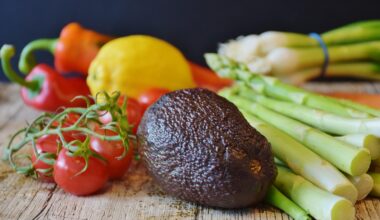The Role of Green Spaces in Enhancing Cardiovascular Exercise Benefits
Engaging in cardiovascular training is highly beneficial for overall health, but the environment in which this exercise takes place also significantly impacts its effectiveness. Numerous studies have identified that exercising within green spaces dramatically enhances physiological and psychological benefits. These natural environments not only encourage individuals to exercise more but also significantly improve mood and reduce feelings of stress or anxiety. Research suggests that the presence of greenery can lower heart rates and blood pressure, further contributing to cardiovascular health. Moreover, exercises such as running, cycling, or even walking within parks provide sensory enrichment that enhances the exercise experience. Exposure to nature during cardio workouts can invigorate the mind and body, providing an excellent emotional uplift. The benefits extend beyond mere physical gains; interaction with nature acts as a powerful tool against mental fatigue. As urbanization increases, access to green spaces is paramount to ensuring individuals maximize their cardiovascular routines and remain motivated. Truly, integrating exercise into a natural setting can convert a tedious workout into an enjoyable activity that promotes lifelong fitness and well-being.
Furthermore, utilizing parks and green spaces can improve social interaction, which is critical for sustained participation in cardiovascular training. Exercising in a communal environment fosters a sense of belonging and motivation among participants. It is not uncommon for individuals to form social connections in parks, encouraging one another to maintain an active lifestyle. Joining group activities like running clubs or outdoor yoga classes often takes place in these enhancing environments, providing a platform for people to engage in a shared fitness journey. Social support is crucial for adherence to a workout regime; the camaraderie experienced during group exercises helps push individuals beyond their perceived limits. Furthermore, motivation is amplified when individuals have access to nature and see others exercising. The variety of activities available in parks leads to diversification, preventing boredom, and elevating interest. This aspect becomes vital in a time when maintaining motivation can be challenging. Participants often feel reinvigorated when they experience a combination of both social interaction and the beauty of nature. Such experiences refresh the mind and can enhance the physical aspects of cardiovascular training significantly.
The atmosphere and ambiance of green environments can transform an aerobic workout session into a therapeutic experience. Scenic views, lush trees, and ambient sounds of nature can work wonders on motivation. Exercisers report feeling happier and more energized when completing workouts in nature compared to urban settings. Moreover, exposure to natural light can enhance vitamin D absorption, which plays a crucial role in regulating mood and energy levels. The simplistic act of being outdoors fosters a happier disposition, aiding in a more enduring commitment to a fitness routine. Engaging with nature’s elements can also lead to an increase in the duration and intensity of cardiovascular training sessions. Feelings of stress decrease significantly when surrounded by greenery, thus allowing individuals to focus on their workout. Immersing oneself in a serene environment often leads to extended workout durations, contributing positively to cardiovascular health. Thus, green spaces are not merely supplementary; they play a key role in enhancing the overall exercise experience and the health outcomes achieved from cardiovascular training.
Impact of Greenery on Exercise Outcomes
When it comes to measurable outcomes, green spaces positively affect cardiovascular health metrics. Studies reveal that individuals who frequently exercise in parks tend to have lower instances of heart-related ailments compared to those who remain solely in indoor facilities. The exposure to nature seems to have a compounding effect on energy expenditure and overall physical performance. Moreover, natural settings provide an interesting landscape that fosters exploration and curiosity, often leading individuals to engage in additional physical activities beyond their planned cardio workout. Enhanced creativity, attributed to nature’s calming properties, can lead to innovative workout routines, increasing diversity and fun in exercise programs. The mental fatigue often associated with monotonous exercise regimens can be alleviated when individuals choose outdoor settings. With increased engagement levels, people report being more inclined to participate regularly. These frequencies create a long-term habit that directly correlates with improved cardiovascular efficiency, stamina, and overall heart health. Ultimately, the incorporation of green spaces into cardiovascular training presents irrefutable benefits in encouraging more active lifestyles.
Moreover, green spaces provide a natural setting that encourages sustainable exercise habits. The accessibility of parks and nature trails often breeds familiarity, allowing individuals to establish consistent routines vital for cardiovascular health. Implementing activity in familiar environments can help solidify an individual’s commitment to their fitness journey. By utilizing these spaces regularly, individuals benefit from decreased barriers to exercise. Less time wasted in transportation when workout locations are nearby often translates to more time spent working out. This close proximity becomes particularly important for urban dwellers, leading to higher engagement levels. Additionally, parks often feature various amenities and facilities that cater to diverse exercise needs, such as jogging paths, open spaces for activities, or designated moments for meditation. These facilities encourage community engagement through organized events, workouts, and programs. Such platforms make participation in cardiovascular activities easier and more appealing, fostering a culture of fitness within neighborhoods. Thus, promoting the use of parks and green spaces can yield impressive results in the motivation and consistency of individual exercise habits.
Seasonal variations in green environments offer unique advantages for cardiovascular training throughout the year. Exercising outdoors can differ dramatically across seasons, allowing individuals to experience the varying beauty of nature within their local parks. Spring blossoms, summer greenery, autumn colors, and winter landscapes each offer a distinctive backdrop that inspires motivation and freshness in workout routines. Engaging with the changing seasons can keep workouts vibrant and exciting, reducing the likelihood of falling into a monotonous routine. The visual appeal and sensory stimuli afforded by nature can reignite enthusiasm, leading to significantly more effective cardiovascular training sessions. The distinct offerings of each season may cater to particular preferences, encouraging individuals to engage in activities they find most enjoyable. Moreover, seasonal training in nature can also promote mindfulness, as individuals become more attuned to their surroundings. This level of engagement greatly enhances mental health well-being while contributing to physical vitality during aerobic exercises. Therefore, embracing the various seasonal opportunities provided by green spaces allows individuals to maintain a consistent and effective cardiovascular training routine all year round.
Conclusion: Emphasizing Green Spaces
In conclusion, the incorporation of green spaces into cardiovascular training routines is paramount for maximizing physical and mental health benefits. Nature’s environment significantly influences exercise motivation, and participants enjoy a rejuvenated experience. Engaging with natural landscapes extends beyond mere aesthetic value; the psychological benefits associated with exercising outdoors are profound. Enhanced social support, enjoyable atmospheres, and the seasonal variety of experiences not only promote diligent adherence to fitness routines but contribute to improved outcomes in cardiovascular health. Overall, developing and maintaining access to these natural spaces should be imperative for communities and urban planners alike. Ensuring that neighborhoods have ample green spaces nurtures a culture of fitness and well-being. For individuals, the message is clear: take your cardiovascular training outdoors to tap into the extensive benefits offered by nature. Such a simple act can transform physical health while also enriching emotional and mental well-being. Embracing this concept can redefine the landscape of fitness engagement, leading to healthier and happier communities filled with active individuals committed to their cardiovascular health.
Call to Action
Ultimately, it is crucial to advocate for increased access to parks and green environments within urban landscapes. Engaging in exercises like running or cycling amid trees and flowering plants not only rejuvenates the spirit but also supports cardiovascular health robustly. Whether through community initiatives or participation in local activities founded in these healthy environments, individuals can collectively urge cities to invest in green space development. Commitment to maintaining existing parks and creating new natural environments can yield substantial societal health benefits. Individuals should also champion initiatives encouraging fitness in these locations, from community runs to outdoor fitness classes. Celebrating local parks and their extensive offerings can help bolster both individual and community health. By focusing on these messages, we can advocate for healthier lifestyles, experience the transformation of urban landscapes, and inspire future generations towards the benefits of exercising amidst nature. Every small step taken within our natural environments can lead to monumental health improvements. Ultimately, cities should thrive, capturing the essence of green spaces in the lives of those who inhabit them. Take action to weave nature seamlessly into our fitness regimes for long-term health benefits.


